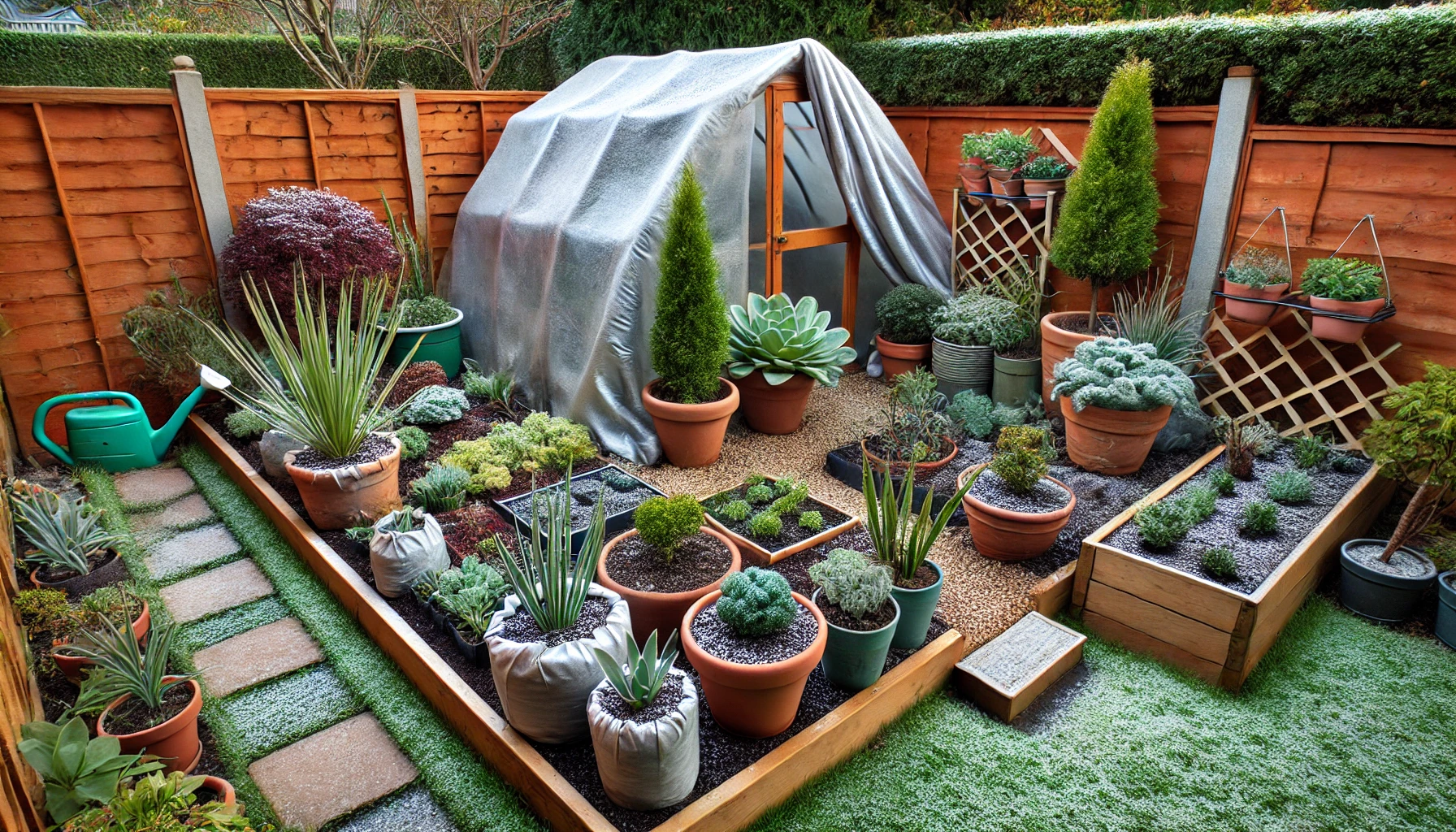Extreme weather conditions, such as excessive heat, frost, strong winds, or heavy rains, can stress and damage your plants. Protecting them during these times is essential to ensure their survival and continued growth. In this guide, we’ll discuss practical ways to shield your plants from harsh weather and create a resilient garden.
The Impact of Harsh Weather on Plants
Extreme weather can cause various issues:
- Heatwaves: Excessive heat can dry out soil quickly, scorch leaves, and cause plants to wilt.
- Frost: Frost damages plant cells, leading to blackened leaves and stunted growth.
- Heavy Rain: Overly saturated soil can lead to root rot and wash away essential nutrients.
- Strong Winds: Winds can break branches, uproot plants, and dry out the soil.
Recognizing these threats and taking preventive measures can help your plants stay healthy year-round.
Protecting Plants from Heatwaves
1. Mulch the Soil
Apply a layer of organic mulch, such as straw, wood chips, or compost, around the base of your plants. Mulch helps retain moisture, regulate soil temperature, and reduce water evaporation.
2. Provide Shade
Use shade cloths, umbrellas, or even lightweight sheets to shield plants from direct sunlight during the hottest parts of the day. For potted plants, move them to shaded areas temporarily.
3. Water Deeply and Consistently
Water plants early in the morning to hydrate them before the heat sets in. Ensure the water reaches the root zone for better absorption.
4. Use Drip Irrigation
Install a drip irrigation system for consistent and efficient watering. It delivers water directly to the roots, minimizing evaporation.
Protecting Plants from Frost
1. Cover Your Plants
Use frost blankets, burlap, or old bedsheets to cover sensitive plants overnight. Remove the covers in the morning to allow sunlight and airflow.
2. Bring Potted Plants Indoors
Move potted plants to sheltered locations, such as a greenhouse, garage, or indoors, when frost is expected.
3. Mulch for Insulation
Mulch acts as an insulating layer, protecting the roots from freezing temperatures. Apply it generously around the base of plants.
4. Water Before Frost Hits
Moist soil retains heat better than dry soil. Water your plants a day before frost is predicted to provide some warmth.
Protecting Plants from Heavy Rain
1. Improve Drainage
Ensure your garden has proper drainage by loosening compacted soil and adding organic matter. Use raised beds for better water flow.
2. Use Rain Barriers
For delicate plants, place plastic sheeting, tarps, or temporary structures to divert heavy rainfall away from the foliage.
3. Stake Tall Plants
Prevent tall or top-heavy plants from toppling over by staking them securely.
4. Avoid Overwatering
Reduce watering during prolonged rainy periods to prevent waterlogging.
Protecting Plants from Strong Winds
1. Create Windbreaks
Install barriers such as fences, hedges, or screens to reduce wind impact. Position them strategically to block prevailing winds.
2. Anchor Plants Securely
Use stakes or cages to support plants, particularly those with weak stems or heavy foliage.
3. Group Plants Together
Cluster pots and plants close together to create mutual support and reduce individual exposure to strong winds.
4. Prune Wisely
Trim any weak or damaged branches that could break during high winds.
General Tips for Weather-Proofing Your Garden
- Choose Resilient Plants: Opt for native or hardy plant varieties that are well-suited to your local climate.
- Monitor the Weather: Stay informed about upcoming weather conditions and take early action to protect your plants.
- Use Temporary Shelters: Portable greenhouses, cold frames, or cloches provide excellent protection during extreme weather.
- Maintain Soil Health: Healthy soil with good structure and nutrient content supports plants better during environmental stress.
Conclusion
By implementing these strategies, you can safeguard your plants against harsh weather conditions and ensure they remain healthy throughout the year. A proactive approach not only protects your garden but also enhances its resilience and beauty.
